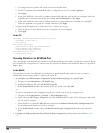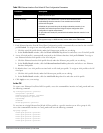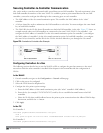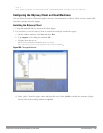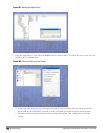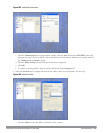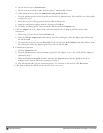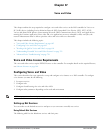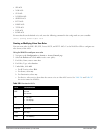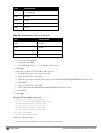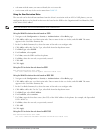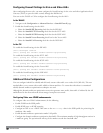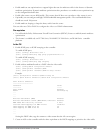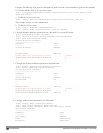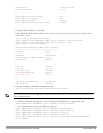
683 | VoiceandVideo DellPowerConnectW-SeriesArubaOS6.2 | User Guide
Net Service Name Protocol Port ALG
svc-sccp TCP 2000 SCCP
svc-sip-tcp TCP 5060 SIP
svc-sip-udp SIP
svc-sips SIP
svc-noe UDP 32512 NOE
svc-h323-udp UDP 1718, 1719 H.323
svc-h323-tcp TCP 1720 H.323
svc-vocera VOCER-
A
svc-svp None SVP
Table 285:
Default Voice Net Services and Ports
Creating Custom Net Services
You can use CLI to create or modify net services. In the config mode on the controller enter:
(host) (config)# netservice [service name] [protocol] [port] [alg]
To create an
svc-noe
service on UDP port 32522, enter:
(host) (config)# netservice svc-noe udp 32522 alg noe
Configuring User Roles
In the user-centric network, the user role of a wireless client determines its privileges and the type of traffic that it
can send or receive in the wireless network. You can configure roles for clients that use mostly data traffic, such as
laptops, and roles for clients that use mostly voice traffic, such as VoIP phones. Although there are different ways for
a client to derive a user role, in most cases the clients using data traffic are assigned a role after they are
authenticated through a method such as 802.1x, VPN, or captive portal. The user role for VoIP phones is derived
from the OUI of their MAC addresses or the SSID to which they associate. Refer to Roles and Policies on page 296
for details on how to create and configure a user role.
This section describes how to configure voice user roles with the required privileges and priorities. Dell controller
provides default user roles for all voice services. You can do one of the following:
l Use default user roles
l Create or modify user roles
l Use user-derivation roles
Using the Default User Role
The controller is configured with the default voice role. This role has the following settings:
l No limit on upload or download bandwidth
l Default L2TP and PPTP pool
l Maximum sessions: 65535
The following ACLs are associated with the default voice role:



